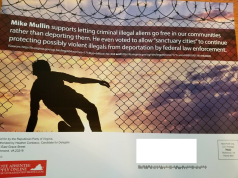 by Andy Schmookler
by Andy Schmookler
A train of thought I’d like to share:
In a biography of Montaigne I’ve lately been reading (How to Live, by Sarah Bakewell), I came across a passage which read: “French forces had been regularly attacking and conquering states on the [Iberian] peninsula since 1494, and would continue doing so until 1559, when the Peace of Cateau Cambresis stopped France’s foreign invasions and thus opened the way to its real sixteenth-century catastrophe: the civil wars.”
The idea that the end of one kind of conflict would open the way not to peace but to another kind of conflict reminded me of a discussion I participated in during the late 1980s. I was then part of a group, composed of diplomats and experts in political psychology, who were working to help the Cold War come to a peaceful end. The question arose whether — when the United States ceased to have Soviet communism as an enemy – many Americans would have a need to find another enemy.
Time would tell.
Almost immediately after recalling that discussion, I happened upon a paragraph in the news magazine, THE WEEK, about how the supporters of our two main political parties feel about each other. “In 1960,” this paragraph said, in summarizing a piece by Ezra Klein and Alvin Chang on Vox.com, “only 5 percent of Republicans and 4 percent of Democrats said they would be upset if their son or daughter married someone affiliated with the other party.” But those numbers have changed drastically: “Five decades later, 49 percent of Republicans and 33 percent of Democrats said they’d be distressed by a politically mixed marriage.”
Although those numbers (49 percent to 33 percent) show a degree of asymmetry between the two sides, my experience over the past decade suggests that they understate the difference in the role of the two sides in creating this kind of antagonism and polarization.
Until recently, people on the liberal side expressed mostly sadness and regret about the increasing divide between our political sides, and a yearning for a way that we might again be able to deal with each other in a spirit of more cooperation and mutual respect.
I have almost never heard such regret and such desire from people on the right/Republican side of the divide. Only lately have I found feelings of anger and repulsion among Democrats to begin to match the similar feelings being directed against them by their counterparts on the Republican side.
That difference corresponds with how this polarization began. It began with the rise of an inflammatory kind of rhetoric on the right, a quarter century ago, around the time the Cold War was peacefully ending. That’s when Newt Gingrich rose to prominence, using propaganda techniques to get his followers to associate “liberal” with ideas of “abnormal” and “immoral.” And that was when Rush Limbaugh ascended to become “the Godzilla of talk radio,” daily teaching his millions of self-described “ditto-heads” to regard Democrats as anti-American enemies worthy of contempt.
And now we see — in the success thus far of Donald Trump’s quest for the Republican nomination for president — the ripened fruits of this cultivation of enmity. As I argued in two recent op/ed pieces – “Trump is But the Mirror” and “People Who Go for Trump’s ‘Hate Thy Neighbor’ Posture” – Trump is gaining his power by harnessing the passions of people who – needing enemies — are predisposed to regard those different from “us” (Mexican immigrants, blacks, Muslims, liberals) with hostility.
Hostility ultimately begets hostility, and mutual hostility ultimately wreaks destruction.
We Americans have been through such a process of hostile division once before.
In his great book on the lead up to the American Civil War – The Impending Crisis – David Potter writes that, by the end of the decade of the 1850s, “the psychological ties of union were much attenuated.” Potter goes on to cite a Georgia newspaper, which observed that “the differences between North and South have been growing more marked for years, and the mutual repulsion more radical, until not a single sympathy is left between the dominant influences in each section.’
We all know about the nightmare that this “mutual repulsion” inflicted upon America a century and a half ago. The fact that the political divisions of that time, unlike those of our own, corresponded with geographical divisions facilitated the translation of those antagonisms into the break-up of the nation, the raising of opposing armies, and the subsequent bloodbath on battlefields across the continent.
But the France of Montaigne’s time showed that civil war – in that case in the form of Protestants and Catholics massacring each other – can occur even between geographically mixed groups.
And besides, bloodbaths are not the only way a nation can destroy itself because its component factions regard each other as enemies.











![Video: VA11 Dem Nominee James Walkinshaw Says “I’m excited to vote in November as well, but we’ve [also] got to be excited to vote on September 9th”](https://bluevirginia.us/wp-content/uploads/2025/08/walknshawwhite-100x75.jpg)
